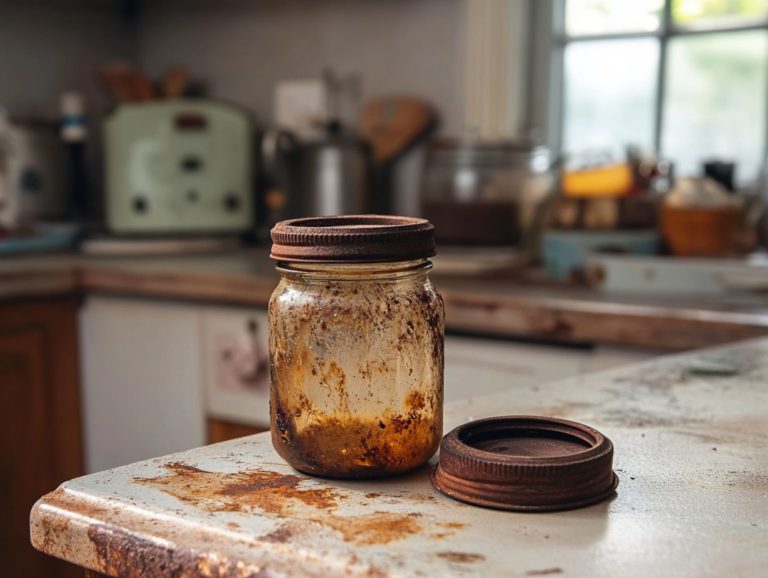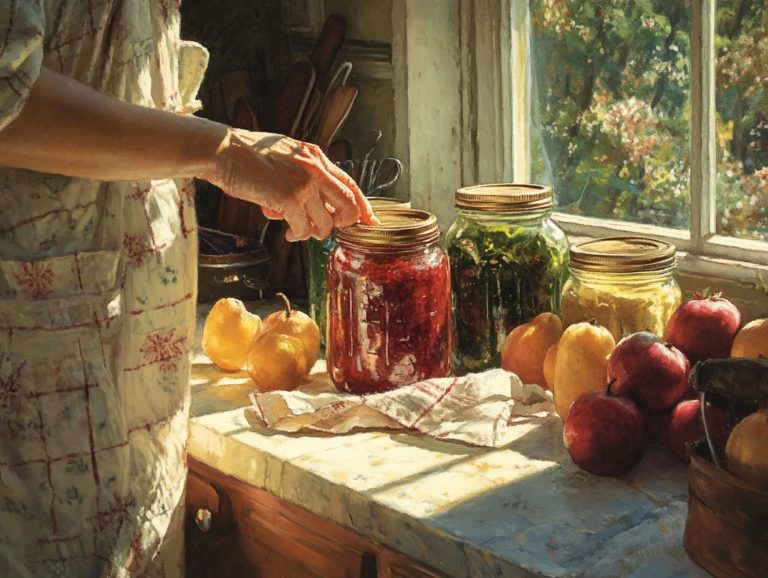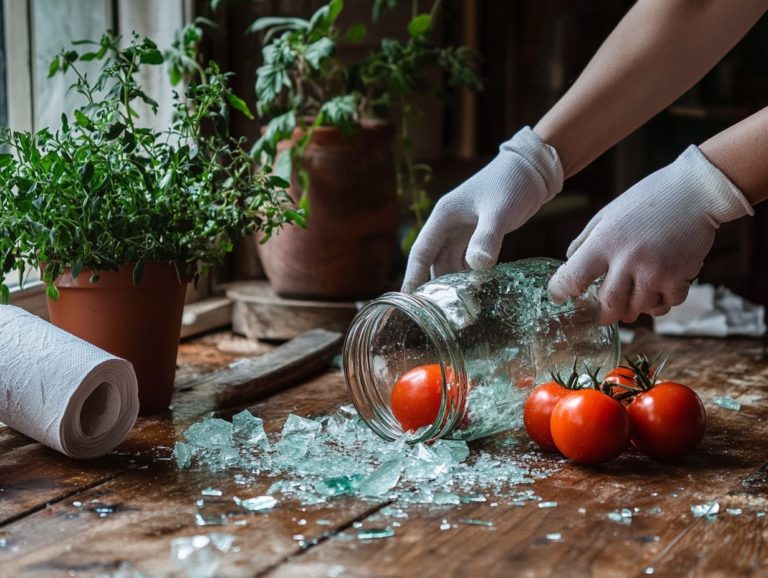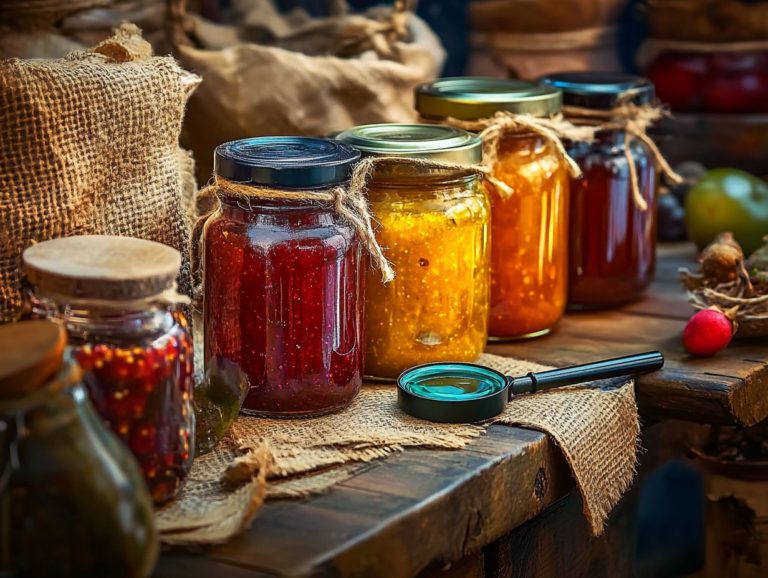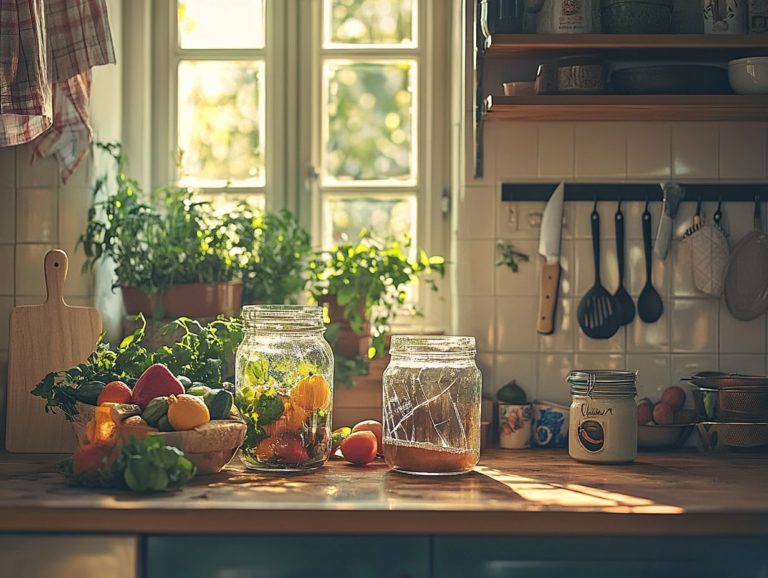Understanding Canning Jar Sizes and Use
Are you ready to unlock the secrets of food preservation? Canning jars are indispensable tools for anyone eager to preserve food, whether you re an experienced canner or just dipping your toes into the world of home canning.
With a variety of sizes at your disposal, each jar plays a distinct role, influencing everything from the quantity of food you can store to its longevity. This article also covers essential care and preparation techniques to ensure impressive canning results. Prepare to elevate your food preservation skills to new heights!
Contents
- Key Takeaways:
- Common Sizes and Uses
- Factors to Consider When Choosing Jar Size
- Proper Use and Care of Canning Jars
- Frequently Asked Questions about home canning and Mason Jar Lifestyle
- What is the purpose of understanding canning jar sizes and use in Mason jars?
- What are the different sizes of canning jars available?
- How do I choose the right size canning jar for my needs and compare jar purposes?
- Why should I use a canning jar specifically for canning?
- Can I reuse canning jars?
- Are there any other uses for canning jars besides canning, such as fermentation kits?
Key Takeaways:
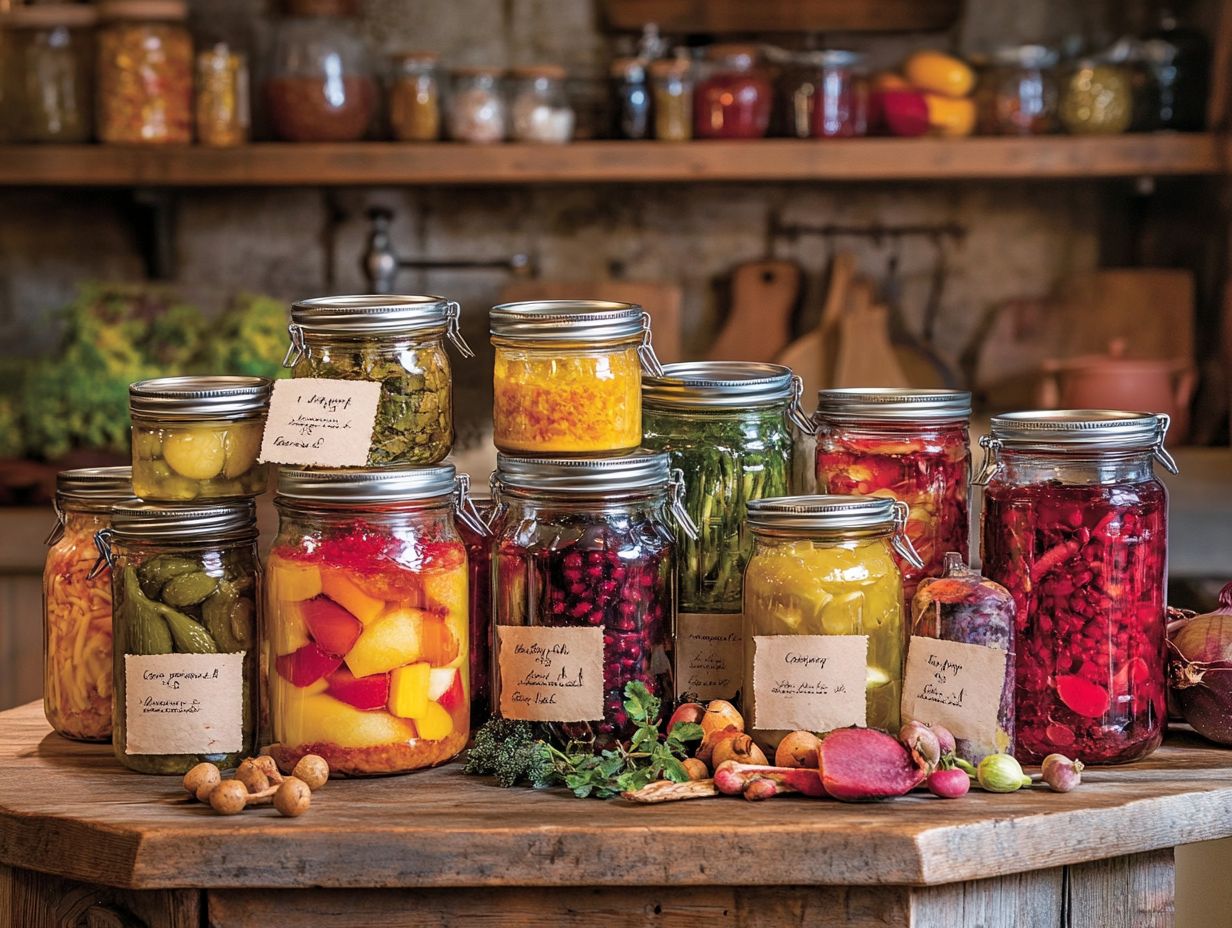
- Understand the different sizes of canning jars available, ranging from 4 oz to 1 gallon, each with their own recommended uses for preserving food.
- Consider factors such as the amount of food to be preserved, available storage space, and shelf life when choosing the appropriate canning jar size.
- Proper use and care of canning jars is important for successful food preservation. This includes preparation and sterilization before use, and proper storage and reuse for maximum shelf life.
What are Canning Jars?
Canning jars, often known as Mason jars, are your go-to glass containers for food preservation. They are designed to keep your ingredients safe while locking in their freshness and nutritional value.
These jars are essential in the kitchen, serving not only for canning fruits and vegetables but also for creating beautiful layered salads, storing dry goods, and even crafting your own homemade candles. Brands like Ball and Kerr have become favorites among enthusiasts, offering a variety of jar types to meet your culinary needs.
Wide mouth jars are perfect for packing larger fruits and vegetables, making the filling and emptying process a breeze. In contrast, regular mouth jars offer a classic choice ideal for sauces and pickles. Understanding these distinctions is crucial for maximizing your food storage efforts, ensuring that everything from your homemade preserves to pantry staples stays intact and bursting with flavor.
Common Sizes and Uses
Understanding the common sizes and uses of canning jars is crucial for effective food preservation, as each jar size serves distinct ingredient storage needs. For more detailed information, check out this guide on understanding the different types of canning jars.
For example, pint jars are excellent for jams and jellies, while quart jars are perfect for larger batches of fruits or sauces, allowing for a range of canning techniques.
Being aware of the dimensions such as height and diameter enables you to select the ideal jar for your specific recipes or food storage requirements.
Overview of Different Jar Sizes
Canning jars come in an array of sizes, each designed for specific food preservation tasks. You’ll find everything from pint jars for smaller batches to half-gallon jars for bulk items, offering you unparalleled versatility in your home canning projects. Understanding using jars: size matters in canning can enhance your canning experience.
Among this selection, the 4-ounce jelly jars are perfect for sauces or jams, while the 16-ounce quart jars are ideal for preserving fruits and vegetables, meeting every possible need. The pint jar, holding around 16 ounces, is excellent for single servings or smaller recipes. In contrast, the quart size provides ample space for larger portions or family-sized meals.
Pint jars, standing about 6 inches tall with a diameter of roughly 3 inches, are designed for convenience; they stack and store beautifully, making them a favorite among home canners. Meanwhile, the half-gallon jars, towering at approximately 9 inches with a wider diameter, are ideal for items like pickles and brined goods. Their size allows for bulk preservation, minimizing the frequency of your canning sessions.
Start your canning journey today and enjoy the fruits of your labor!
Recommended Uses for Each Size
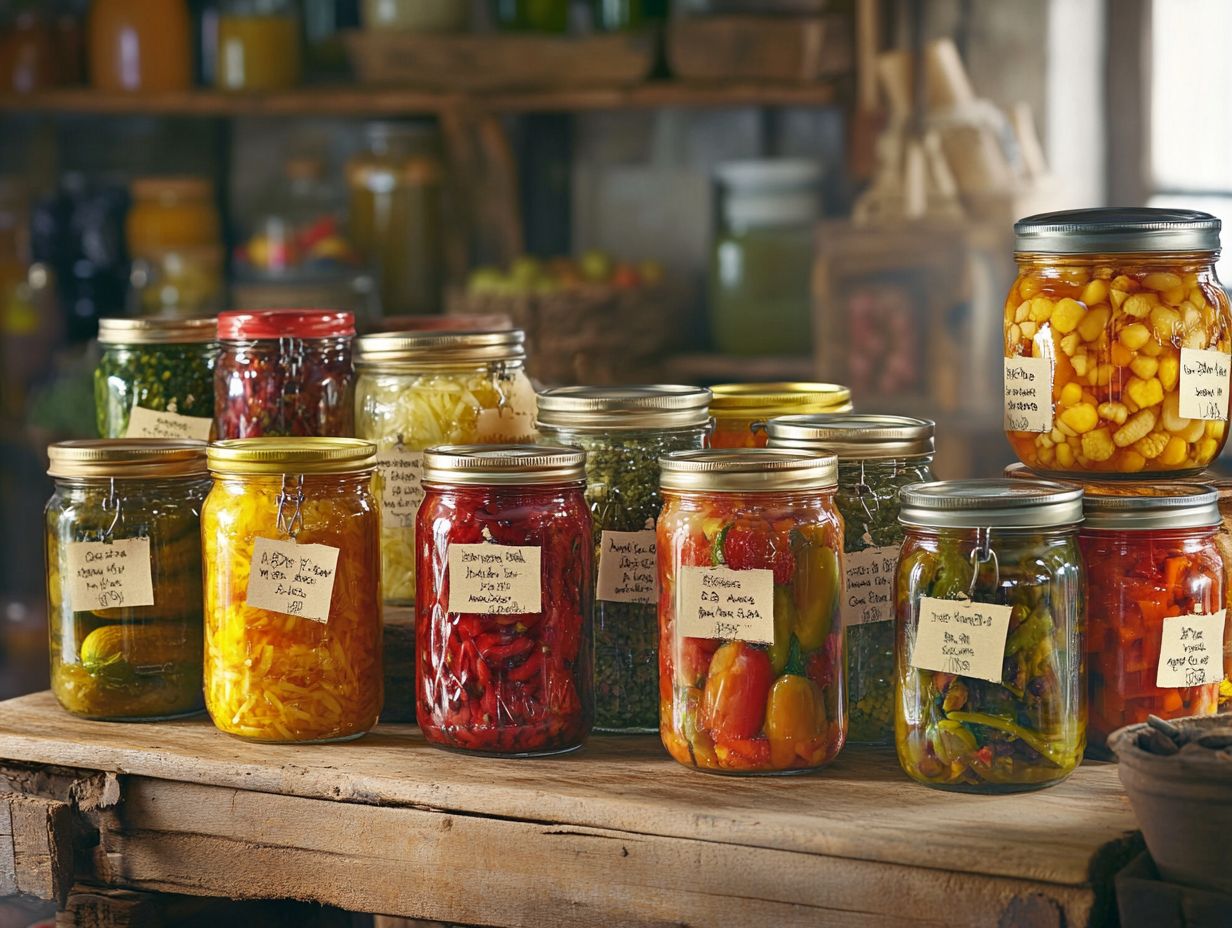
Choosing the right canning jar size is important for preserving your food well. Pint jars are great for smaller amounts of sauces or jams. Quart jars work better for larger items like fruits and vegetables.
For example, when you make homemade strawberry jam, pint jars provide just the right amount for your family. This way, you don t have to worry about spoilage.
On the other hand, quart jars are ideal for canning whole tomatoes or pickling cucumbers. These items often need more space due to their bulk.
If you plan to preserve larger quantities, consider using half-gallon jars. They are invaluable for items like apple slices or sauerkraut, giving you enough room for generous servings.
Using the right jar extends the shelf life of your preserved foods. It also ensures that the flavors stay intact, enhancing your mealtime experiences with your homemade creations.
Factors to Consider When Choosing Jar Size
When choosing the right jar size for canning, consider factors such as the quantity of food, your storage space, and the desired shelf life of the preserved items.
Understanding these elements can boost your food preservation efforts. This way, you can ensure your ingredients stay fresh and safe for consumption.
Amount of Food to be Preserved
The amount of food you plan to preserve directly impacts your choice of canning jar size. Selecting the right jar helps minimize waste and spoilage.
Understanding the relationship between food quantity and jar selection is essential for effective preservation. Choosing the right jar size helps create a strong vacuum seal, which is key for longevity.
For instance, larger batches of jams need larger jars, while a small handful of herbs might only require petite jars. This careful selection maximizes your storage space.
Using jars that are too large can leave excess air, ultimately jeopardizing the quality of your preserved goods.
Storage Space and Shelf Life
Both storage space and shelf life are important in determining the best jar size for your canning efforts. Understanding these elements maximizes food storage and ensures the longevity of your preserved items.
When selecting jars, consider both the available space and the types of foods you intend to preserve. Smaller jars are better for items you eat often, while larger jars work well for bulk storage.
To optimize your space, think about grouping smaller jars together on shelves and using vertical storage solutions.
Maintaining the quality of your food depends on sealing your jars properly and storing them in a cool, dark environment. This can significantly prolong their shelf life.
Proper Use and Care of Canning Jars
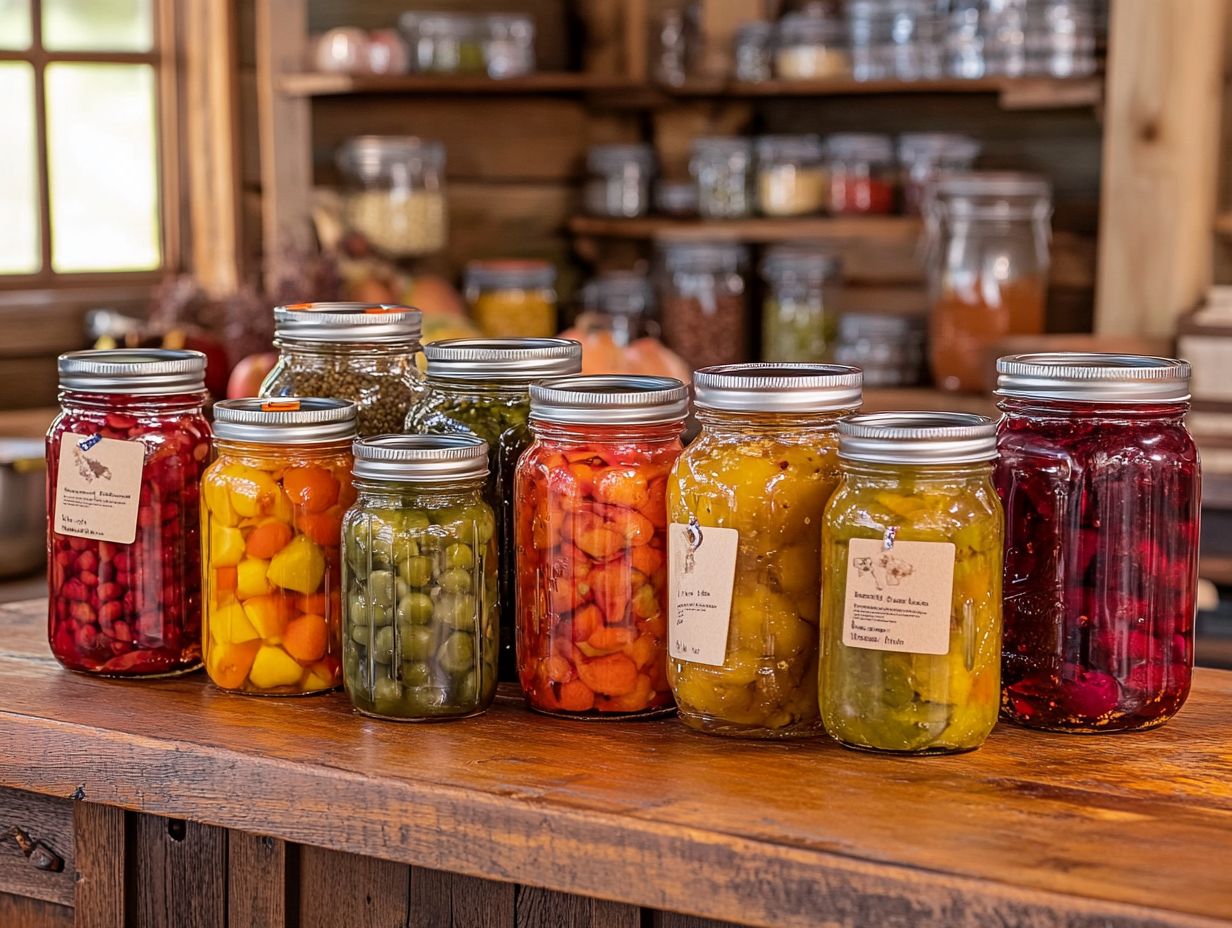
Proper use and care of your canning jars is essential for successful food preservation. This includes pre-canning preparation, sterilization, and safe storage practices that enhance the jars’ reusability.
These practices help maintain the highest standards of food safety.
Preparation and Sterilization
Preparation and sterilization are important steps in the canning process, ensuring that your jars are free from contaminants. This drastically minimizes the risk of spoilage and secures safe food preservation.
Start by gathering all the necessary canning equipment high-quality jars, metal lids, and bands specifically designed for canning. Once you have everything, wash the jars thoroughly in hot, soapy water, rinsing them well to eliminate any soap residue.
After this initial cleaning, it s time to sterilize the jars. You can do this by submerging them in boiling water for at least 10 minutes. Using a jar lifter makes this task easier and helps you avoid burns.
Inspect the lids for any imperfections or damage; even the smallest flaw can compromise the seal when it s time to store your goods. By following these steps carefully, you ll maintain the integrity of your canned creations.
Storage and Reuse
Proper storage and reuse of canning jars can significantly enhance their longevity and effectiveness. It s crucial to implement best practices that ensure safety and maintain the jars’ integrity over time.
These techniques protect against contamination and maximize the utility of each jar, allowing for a more sustainable approach to food preservation. If you re engaged in canning, recognize the importance of cleaning and inspecting jars before reuse. Taking this care ensures your food stays delicious and safe!
Adopt strategies like labeling and maintaining a cool, dark storage environment. This helps prevent spoilage and ensures your food retains its quality, which is particularly advantageous during harvest season.
Frequently Asked Questions about home canning and Mason Jar Lifestyle
What is the purpose of understanding canning jar sizes and use in Mason jars?
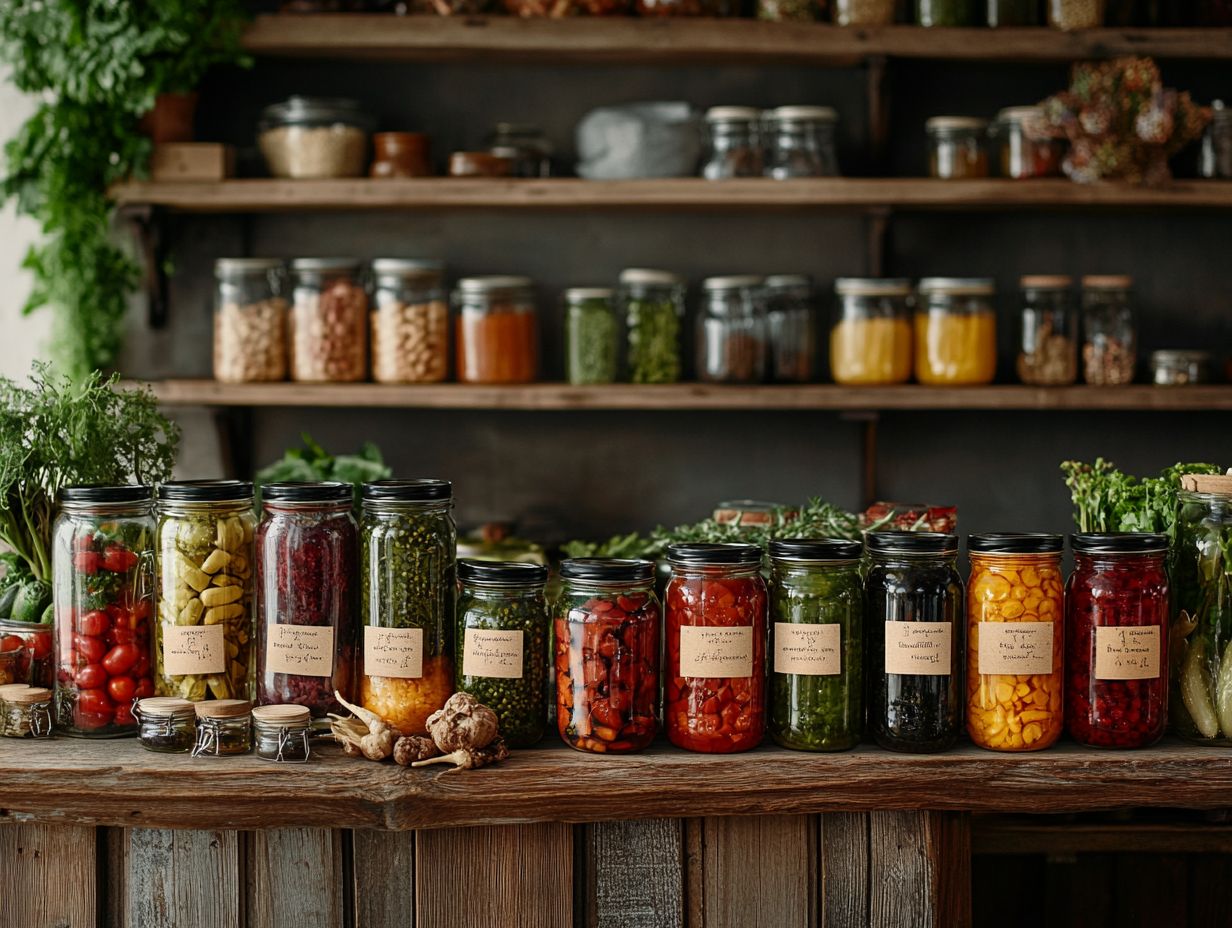
Understanding canning jar sizes and use allows you to properly preserve and store your food, maximizing freshness and longevity. Refer to our user-friendly guide on using jars for more information.
What are the different sizes of canning jars available?
Canning jars come in various sizes, including half pint, pint, quart, half gallon, and even pint and a half. The most common size is the quart jar, with varying lid sizes for each.
How do I choose the right size canning jar for my needs and compare jar purposes?
The size of the jar you choose depends on the type and amount of food you are canning. Smaller jars are ideal for jams and jellies, while larger jars are better for pickles or whole fruits and vegetables.
Why should I use a canning jar specifically for canning?
Canning jars are designed to withstand the high heat and pressure of the canning process, ensuring that your food is properly preserved and safe to eat.
Can I reuse canning jars?
Yes, canning jars can be reused as long as they are in good condition and have been properly sanitized. It’s important to check for any cracks or chips before reusing a jar, as proper safety measures are essential for reusability.
Are there any other uses for canning jars besides canning, such as fermentation kits?
Yes, canning jars can also be used for storing and organizing various items, such as dry goods, spices, ingredient storage, and craft supplies. They can also be used as drinking glasses or for making homemade candles or other crafts, making them versatile kitchen essentials.
Ready to start your canning journey? Gather your jars and let s preserve some delicious memories!

